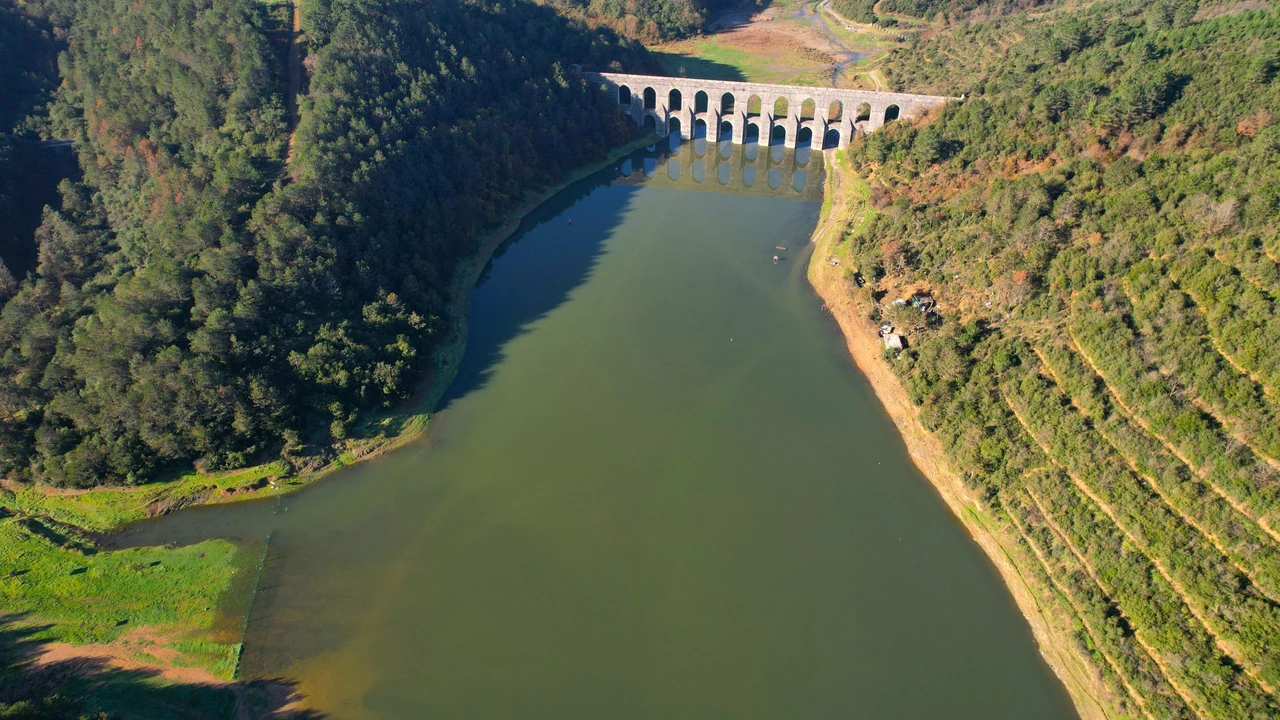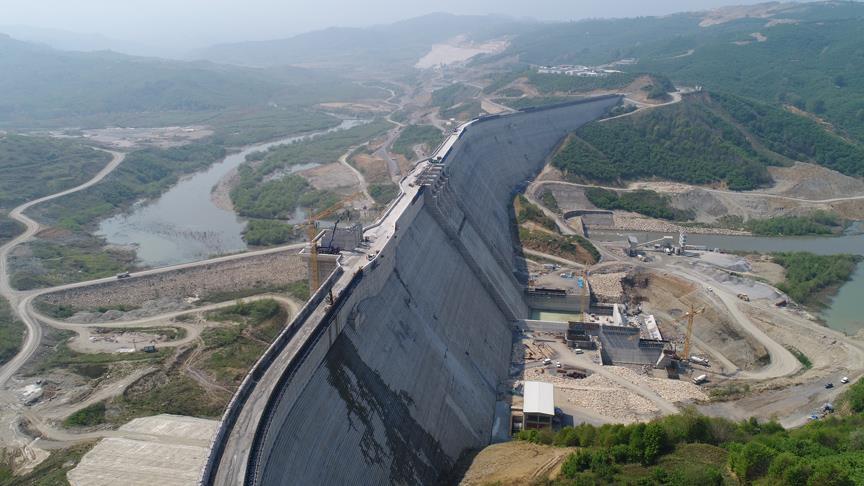Istanbul’s water reservoir levels drop below 50%
 Alibeykoy Dam which is supplying water to the Istanbul, Türkiye. (IHA Photo)
Alibeykoy Dam which is supplying water to the Istanbul, Türkiye. (IHA Photo)
The average water levels in Istanbul‘s reservoirs have fallen below 50%, according to the Istanbul Water and Sewerage Administration (ISKI).
This marks a significant decline from the year’s peak on May 6th, when reservoirs were at 83.43% capacity.
As of today, the average reservoir capacity stands at 49.86%, a troubling sign as the city faces ongoing drought conditions.
Water levels across key reservoirs
The individual reservoir levels vary significantly, with some areas facing severe shortages:
- Istrancalar: 30.62%
- Terkos: 64.2%
- Sazlıdere: 51.84%
- Alibey: 16.62%
- Buyukcekmece: 48.95%
- Omerli: 51.34%
- Darlik: 54.51%
- Elmali: 58.59%
- Pabucdere: 30.22%
- Kazandere: 17.08%
This year, 334.91 million cubic meters of water have been supplied to the city from Melen and Yesilcay sources.
Additionally, ISKI reported that 741.02 million cubic meters of water have been processed and delivered to Istanbul through water treatment facilities in 2024.

Impact of decreasing rainfall
The first eight months of 2024 saw a total rainfall of 360.53 kilograms per square meter over the reservoirs. Istanbul’s reservoirs, with a combined storage capacity of 868 million cubic meters, currently hold just 436.36 million cubic meters of water.
Daily water consumption in Istanbul was recorded at 3.453 million cubic meters yesterday. Alibey and Kazandere reservoirs have particularly suffered, with water levels dipping below 20% because of the summer heat and ongoing drought.
Historical context of reservoir levels
İSKİ’s data highlights the fluctuation of water levels over the past decade. On Aug. 22 last year, reservoir levels were at 31.87%. In comparison, the levels in previous years were:
- 2022: 60.22%
- 2021: 60.57%
- 2020: 50.31%
- 2019: 61.82%
- 2018: 65.35%
- 2017: 65.06%
- 2016: 54.81%
- 2015: 71.28%
- 2014: 16.98%
Expert warns of growing water crisis
Halil Fatih Akgul, Chairman of the Board of Trustees of the Turkish Waste Prevention Foundation (TISVA), emphasized the severity of the situation in an interview with Anadolu Agency (AA).
He highlighted that the rapid depletion of Istanbul’s water resources is a serious warning sign.
Akgul pointed out that one of the primary reasons for the decline in water levels is the high rate of water loss within the city’s supply network, which has reached between 40% and 50%. “Almost half of the 100 liters of water fails to reach consumers,” Akgul noted, stressing the irreplaceable nature of water as a resource.
Call to action: Water conservation
Akgul urged citizens to take immediate action to conserve water. “In a metropolis like Istanbul, the rapid depletion of water resources signals a significant danger. Each individual’s contribution to water conservation is a crucial step in averting this crisis,” he said.
He also provided practical tips to reduce water wastage, such as fixing dripping taps, turning off the tap while brushing teeth, and shortening shower times. According to Akgul, even small changes can lead to significant water savings.
Akgul also introduced the “3-7-10” rule, encouraging residents to shorten shower times by 3 minutes, reduce the time taps are left running by 7 seconds, and limit unnecessary water use by 10 liters. He further recommended using water from washing vegetables to irrigate plants, using dishwashers instead of hand-washing dishes, and promptly fixing any leaks.
“In Istanbul, preserving every drop of water is preserving our future,” Akgul concluded.



